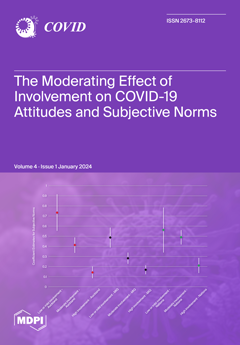Background: Antimicrobial resistance (AMR), a major global public health threat that has caused 1.2 million deaths, calls for immediate action. Antimicrobial stewardship (AMS) promotes judicious antibiotic use, but the COVID-19 pandemic increased AMR by 15%. Although there are paramount data on the impact
[...] Read more.
Background: Antimicrobial resistance (AMR), a major global public health threat that has caused 1.2 million deaths, calls for immediate action. Antimicrobial stewardship (AMS) promotes judicious antibiotic use, but the COVID-19 pandemic increased AMR by 15%. Although there are paramount data on the impact of COVID-19 on AMS, empirical data on AMS implementation during the pandemic are lacking. This study aimed to investigate antibiotic prescribing and AMS implementation prior to the pandemic (PP) in 2019 and during the pandemic (DP) in 2020 at one NHS Foundation Trust in England. Method: This cross-sectional study involved adult patients admitted to one NHS Foundation Trust in England, focusing on those prescribed antibiotics for respiratory tract infections (RTIs). This included cases of pneumonia in both years under study and COVID-19 cases in 2020. Data were retrospectively extracted from medical records using a validated data extraction tool, which was developed based on the ‘Start Smart, Then Focus’ (SSTF) approach of the AMS Toolkit. Results: This study included 640 patients. The largest age group in the study was 66–85 years, comprising 156 individuals (48.8%) PP in 2019 and 148 (46.3%) DP in 2020. CAP was the predominant diagnosis, affecting approximately 126 (39.4%) PP and 136 (42.5%) DP patients. Regarding the timing of antibiotic review post-admission, reviews were typically conducted within 48–72 h, with no significant difference between 2019 and 2020, with an odds ratio of 1.02 (95% CI 0.97 to 1.08,
p-Value = 0.461). During the pandemic, there was a significant difference in both AMS interventions, ‘Continue Antibiotics’ and ‘De-escalation’, with odds ratios of 3.36 (95% CI 1.30–9.25,
p = 0.015) and 2.77 (95% CI 1.37–5.70,
p = 0.005), respectively. Conclusion: This study emphasises the need for robust AMS to ensure adherence to guidelines. It acknowledges the impact of comorbidities and advocates for sustained stewardship efforts to combat resistance both during and after the pandemic era.
Full article





